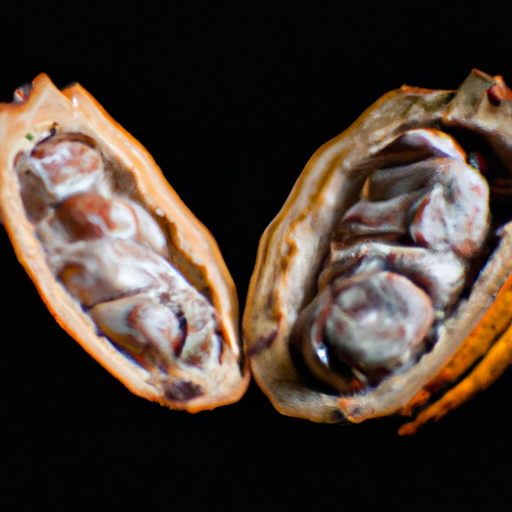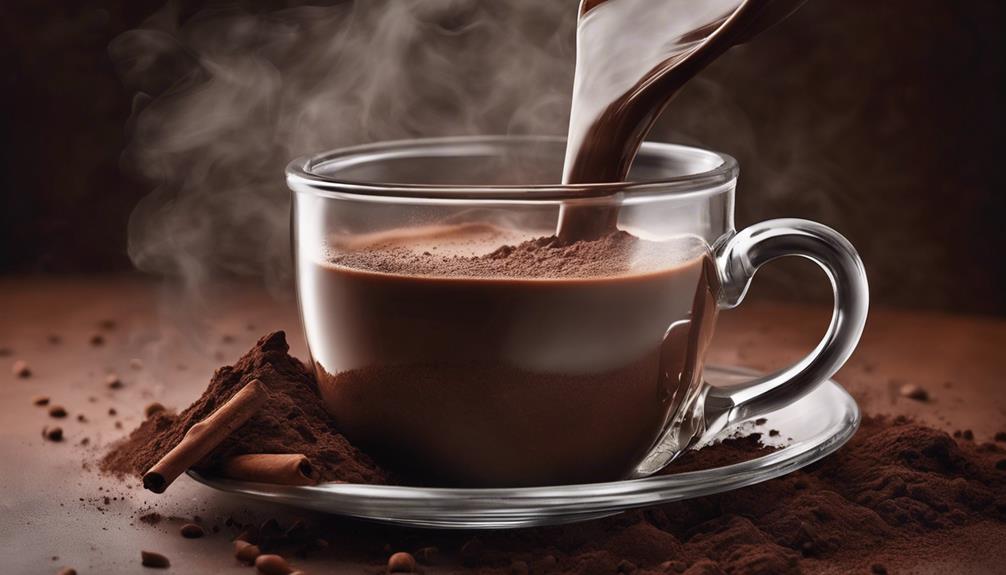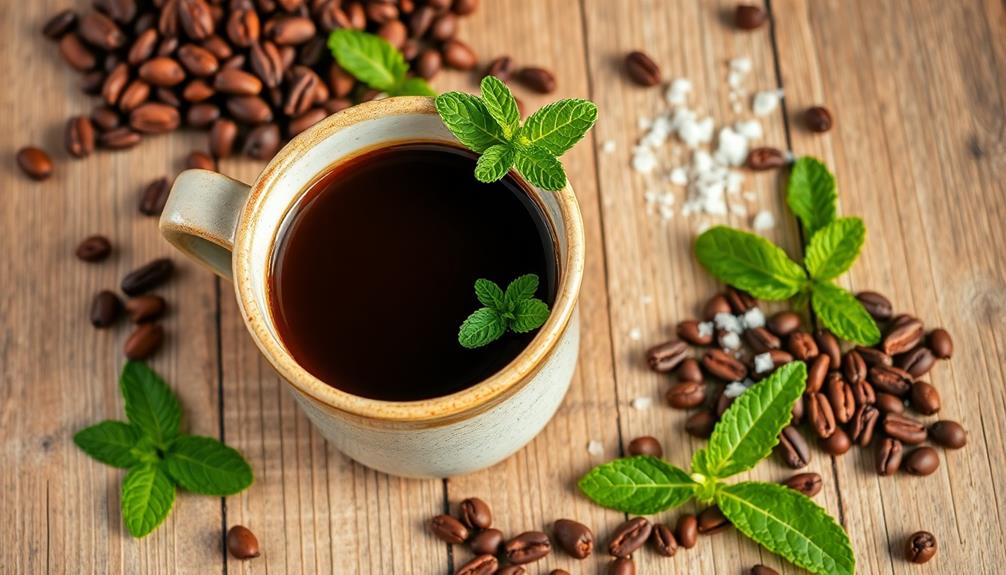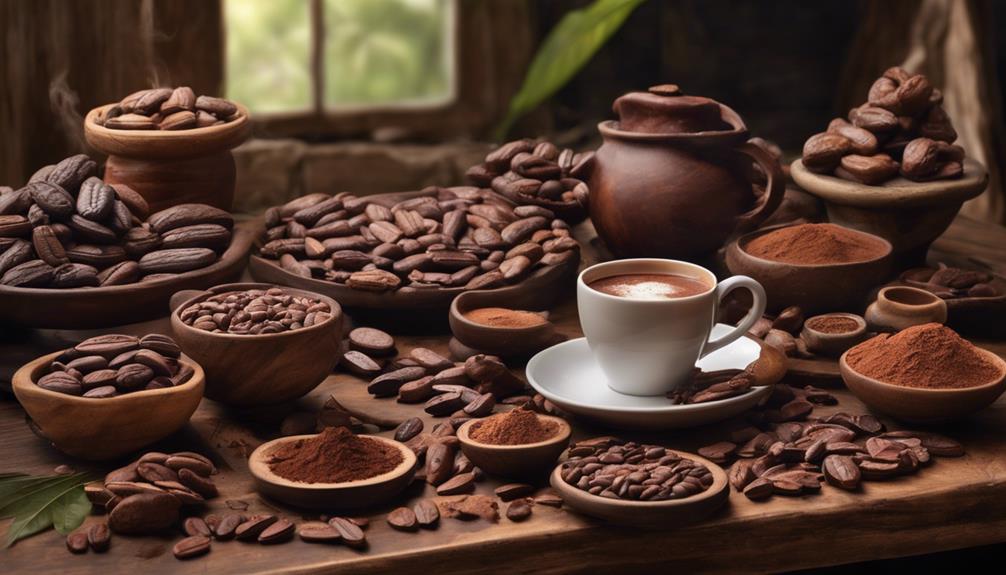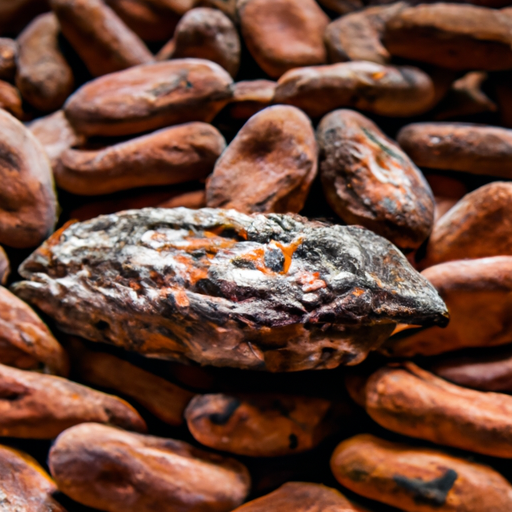As someone who cares about their health, I always make sure to make educated decisions about what I consume, including the quality of raw cacao. The issue of cadmium levels in raw cacao has caught my attention.
Cadmium, a heavy metal, is known to pose potential health risks when consumed in excessive amounts. In this article, we will delve into the world of cadmium and explore its presence in different brands of raw cacao. By understanding the sources of cadmium and its effects on human health, we can make educated decisions about our consumption of this beloved superfood.
Additionally, we will discuss recommended daily intake levels, ways to minimize cadmium exposure, and even how to test cadmium levels in raw cacao at home. Join me on this data-driven journey to ensure that we are getting the best quality raw cacao without compromising our well-being.
Key Takeaways
- Cadmium levels in raw cacao should be tested and disclosed to ensure consumer safety.
- Consumers should look for raw cacao that is sourced from organic and fair-trade certified farms.
- Raw cacao should be free from additives, preservatives, and undergo minimal processing for maximum health benefits.
- It is important to consume raw cacao in moderation to maintain a balanced diet and minimize exposure to heavy metals.
Understanding Cadmium and its Health Risks
You might be surprised to learn just how harmful cadmium can be to your health. It’s crucial to understand the risks it poses before consuming raw cacao.
Cadmium is a toxic heavy metal that can accumulate in the body over time, leading to various health issues. Long-term exposure to high levels of cadmium has been linked to kidney damage, bone mineral density loss, and even an increased risk of certain cancers.
However, it’s important to note that the toxicity of cadmium can be influenced by several factors, including the presence of antioxidants. Research suggests that antioxidants, such as those found in raw cacao, may help reduce the absorption of cadmium in the body. Understanding cadmium toxicity and the role of antioxidants can help you make informed decisions about consuming raw cacao.
Moving on to the source of cadmium in raw cacao…
The Source of Cadmium in Raw Cacao
Explore the rich origins of your favorite raw cacao as we delve into the intriguing source of a certain metallic element found within. Cadmium, a toxic heavy metal, can contaminate raw cacao through various sources. Understanding these sources is crucial in ensuring the safety of the raw cacao we consume.
Soil contamination: Cadmium can be naturally present in soil, but it can also accumulate due to human activities such as mining and industrial pollution.
Water contamination: If the water used for irrigation or processing raw cacao is contaminated with cadmium, it can seep into the cacao beans.
Fertilizers and pesticides: The use of certain fertilizers and pesticides can introduce cadmium into the soil, which can then be absorbed by cacao plants.
Processing equipment: Cadmium can also be introduced during the processing of raw cacao if the equipment used contains traces of the metal.
Understanding these potential sources of cadmium contamination is vital in ensuring the safety of raw cacao products.
Now, let’s explore the levels of cadmium in different brands of raw cacao.
Cadmium Levels in Different Brands of Raw Cacao
Take a moment to discover the varying levels of this harmful heavy metal in different brands of raw cacao.
When it comes to cadmium levels in raw cacao, cocoa farming practices play a significant role.
Organic cacao tends to have lower levels of cadmium compared to non-organic cacao. This is because organic farming practices typically avoid the use of synthetic fertilizers and pesticides that can introduce cadmium into the soil.
On the other hand, non-organic cacao may be more susceptible to cadmium contamination due to the use of these chemicals.
It’s important to consider these factors when choosing a brand of raw cacao to minimize your exposure to cadmium.
Understanding the potential effects of cadmium on human health is essential in making informed decisions about the products we consume.
The Effects of Cadmium on Human Health
The effects of cadmium on human health are significant and alarming. Long-term exposure to this toxic metal has been linked to chronic diseases such as kidney damage, lung disease, and certain types of cancer. It is concerning that cadmium, commonly found in raw cacao, can have such detrimental effects on our well-being. However, there is hope in the form of antioxidants. Research suggests that antioxidants, like those found in raw cacao, can help reduce cadmium toxicity by protecting our cells from oxidative stress. By incorporating antioxidant-rich foods into our diet, we have the potential to mitigate the harmful impact of cadmium on our health.
Transitioning into the next section, let’s explore the recommended daily intake of cadmium.
Recommended Daily Intake of Cadmium
Let’s dive into the recommended daily amount of cadmium that we should be mindful of in our diets.
Cadmium is a toxic metal that can have detrimental effects on our health. Long-term exposure to high levels of cadmium can lead to kidney damage, bone loss, and an increased risk of certain cancers. Therefore, it is important to limit our intake of cadmium to protect our well-being.
The World Health Organization (WHO) has established a provisional tolerable monthly intake (PTMI) for cadmium, which is set at 25 micrograms per kilogram of body weight. This means that for an average adult weighing 70 kilograms, the recommended daily intake would be around 1.8 micrograms of cadmium.
By being aware of these guidelines, we can make informed choices to minimize our cadmium exposure in raw cacao and other food sources.
Minimizing Cadmium Exposure in Raw Cacao
To minimize your exposure to cadmium in raw cacao, it’s important to be aware that studies have shown that up to 80% of the world’s population consumes some amount of raw cacao on a regular basis. The presence of cadmium in raw cacao can have health implications, as it is a toxic heavy metal that can accumulate in the body over time.
However, there are ways to reduce cadmium exposure when consuming raw cacao. Here are some tips:
- Choose organic raw cacao: Organic farming practices tend to result in lower cadmium levels in crops.
- Check the origin: Cacao beans grown in certain regions, such as South America, tend to have lower cadmium levels.
- Limit consumption: While raw cacao can be enjoyed in moderation, excessive consumption can increase cadmium intake.
By following these guidelines, you can minimize your cadmium exposure while enjoying the health benefits of raw cacao.
In the next section, we will explore how to test cadmium levels in raw cacao at home.
Testing Cadmium Levels in Raw Cacao at Home
To ensure that I am minimizing my cadmium exposure in raw cacao, I decided to test the cadmium levels in the cacao myself at home. There are various testing methods available for this purpose, including atomic absorption spectrometry and inductively coupled plasma mass spectrometry. These methods allow for accurate measurement of cadmium levels in the cacao samples. Once I have the results, interpreting them is crucial in understanding the potential risk. It is important to compare the levels against the established regulations and standards for cadmium in food products. This will help me determine whether the cadmium levels in my raw cacao are within safe limits or if I need to take further precautions. Moving forward, let’s explore the regulations and standards for cadmium in food products.
Regulations and Standards for Cadmium in Food Products
To make informed decisions about your health and safety, it is important to be aware of the regulations and standards for cadmium in food products. Cadmium, a heavy metal, can be found in various foods, including raw cacao. Regulatory bodies have established limits on the amount of cadmium allowed in food products to protect consumers. For example, the European Union has set a maximum limit of 0.1 milligrams per kilogram of raw cacao. These regulations aim to minimize the risk of cadmium toxicity and ensure food safety.
Understanding and following these regulations will give you confidence in the quality of the raw cacao you consume. However, it is important to consider additional factors when making informed choices about consuming raw cacao.
Making Informed Choices When Consuming Raw Cacao
When it comes to indulging in raw cacao, it’s essential to consider all the factors at play to make the most informed and delicious decision. Here are four key points to keep in mind when making choices about consuming raw cacao:
-
Understand the source: Look for organic and fair-trade certified raw cacao to ensure it is produced sustainably and responsibly.
-
Check for purity: Opt for raw cacao that is free from additives, preservatives, and unnecessary processing methods to preserve its natural health benefits.
-
Consider cadmium levels: While raw cacao naturally contains trace amounts of cadmium, choose brands that test for and disclose their cadmium levels to minimize exposure to this heavy metal.
-
Moderation is key: Although raw cacao offers various health benefits, it’s important to consume it in moderation as part of a balanced diet.
By making informed choices and considering these factors, you can enjoy the delicious taste and health benefits of raw cacao while minimizing potential risks.
Frequently Asked Questions
How does the presence of cadmium in raw cacao affect the taste and flavor of the final product?
The presence of cadmium in raw cacao can negatively impact the flavor and texture of the final product. It may result in a bitter taste and gritty texture, affecting the overall quality of the cacao-based products.
Can consuming raw cacao with high cadmium levels have a negative impact on fertility and reproductive health?
Consuming raw cacao with high cadmium levels can negatively impact fertility and reproductive health. Studies have shown that cadmium exposure can lead to decreased sperm quality and hormone imbalances, affecting both men and women.
Are there any natural methods to reduce cadmium levels in raw cacao during the manufacturing process?
Yes, there are natural methods to reduce cadmium levels in raw cacao during the manufacturing process. These methods include using certain soil treatments, such as adding organic matter or using specific plants that can absorb cadmium.
Can the consumption of raw cacao with high cadmium levels lead to the development of specific types of cancer?
The consumption of raw cacao with high cadmium levels can increase the risk of developing certain types of cancer. Cadmium exposure has been linked to cancer development, emphasizing the importance of monitoring cadmium levels in raw cacao.
Is there a difference in cadmium levels between organic and non-organic brands of raw cacao?
When comparing cadmium levels in organic and non-organic raw cacao, a comparative analysis reveals that organic brands tend to have lower levels. High cadmium in raw cacao can impact overall health and well-being.
Is There a Safe Limit of Lead and Cadmium in Raw Cacao?
When it comes to lead and cadmium in cacao, there is ongoing concern about safe limits. While cacao beans naturally contain these heavy metals, it’s important to monitor levels to prevent health risks. To enjoy cacao safely, look for products tested for low lead and cadmium content.
Conclusion
In conclusion, it is crucial to be aware of the cadmium content in raw cacao due to its potential health risks.
Different brands may vary in their cadmium levels, so it is important to choose wisely.
To minimize exposure, it is recommended to consume raw cacao in moderation and opt for brands with lower cadmium levels.
Home testing kits can also be used to check cadmium levels.
Adhering to regulations and standards for cadmium in food products ensures safer consumption.
Remember, knowledge is power when it comes to enjoying the benefits of raw cacao while minimizing potential risks.

